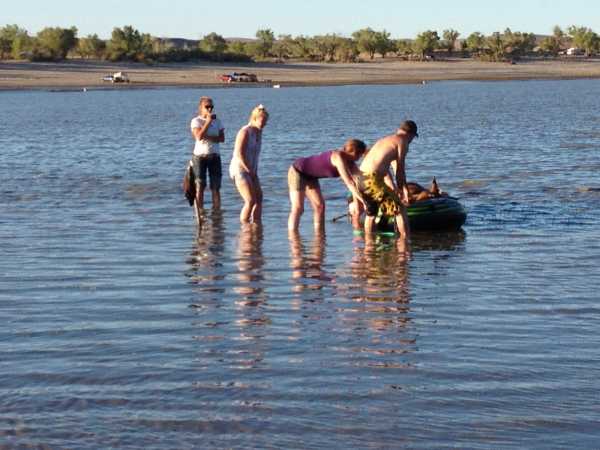LARGE ANIMAL RESCUE SKULL SESSION
|
| DRAFT HORSE IN THE LAKE |
HOW THE INCIDENT WAS RESOLVED
|
This problem is based on a real scenario and is presented for a "Skull Session" discussion in the Technical Large Animal Emergency Rescue Facebook Group.
A number of excellent comments were posted to the group. Here is a recap of the incident as presented, followed by group feedback and the actual details of how the rescue was achieved. Location The incident has occurred in a large lake and recreation area managed by the State Parks department. The lake has a sandy bottom that includes strata of unstable lake bed that can entrap animals and people alike. The adjacent beach has a great deal of loose sand beyond the wake line that tends to get vehicles stuck that try to drive over it. Date and Time Mid-afternoon on the Labor Day holiday. Incident Details You receive a call from State Parks stating that a Belgian Draft Horse is bogged in the water in the lake. Parks personnel and bystanders have tried unsuccessfully to extricate the horse for nearly four hours. Equipment on-scene includes a couple of State Parks vehicles, a State Parks brush fire truck and a citizen's 4-wheel drive pickup that has an electric winch parked at the water's edge. Upon arrival you see the horse in the water, surrounded by civilians, with its head being floated on an inner tube. It becomes immediately clear that the horse's legs are stuck fast in the lake bottom sediment and he can't simply be pulled free.
The scene on your arrival.
|
| ACTUAL RESCUE ACTIVITIES |
A veterinarian was not available that day. The Rescue Glide was not available that day. (We since have a obtained a second glide for the area.) It was a holiday and only four trained volunteers were available within the critical time remaining, two for water work and two for shore support and safety. The Portable Water Supply unit with jetting wands and equipment got stuck in the sand about 1/4 mile from the horse. We had less than two hours of daylight left.
Upon arrival we assessed the scene and the horse. We determined that the horse was bogged up to his gaskins and forearms in silt and was laying at about a 45 degree angle. His head was being floated by a swimmer who had brought out an inner tube.
One team member immediately slipped into the band of unstable silt and had to be pulled free. We marked the unstable area with a shovel with a shirt tied to it. Although boating is allowed in the lake, no personal flotation devices were at hand. (We now carry extra life jackets.)
The horse's owners were a farrier / veterinary technician and his wife who appeared to be very competent around horses. We identified two swimmers who seemed competent and would listen to instructions. Another two swimmers were used as "runners" to retrieve equipment from shore. (Given that this was a holiday, sobriety was a significant factor as to who would be allowed to assist and who was sent off for "shore tasks" such as looking for broken glass and other beach hazards in our haul path.)
One of the park rangers operated as safety officer from shore. The park fire crew brought a brush fire rig since the Portable Water Supply was stranded in the sand. A lake visitor positioned a pickup truck with an electric winch in a viable location to winch out the horse.
Organizing the rescue. A rag covered shovel handle indicates the boggy area.
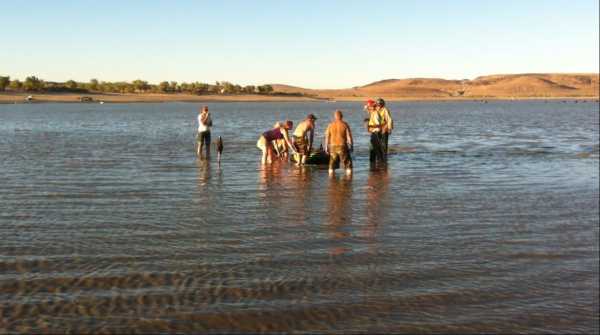
We had to develop a method to get the horse's legs free from the silt and suspend them until he could be dragged to shore. In this case it required carefully jetting around the horse's legs, a rope or strap looped around each leg, with one helper keeping each leg suspended while staying clear of the kill zone. Specific instructions were given to minimize rescuer risk.
Before this operation commenced, the horse owner dove under the water and established the locations of each leg. (This action had to take place while all legs were completely immobilized.)
Locating the horse's legs and placing lifting ropes or straps around each.
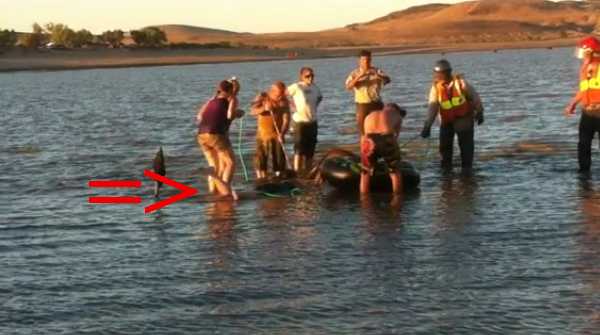
Setting up the jetting wands.
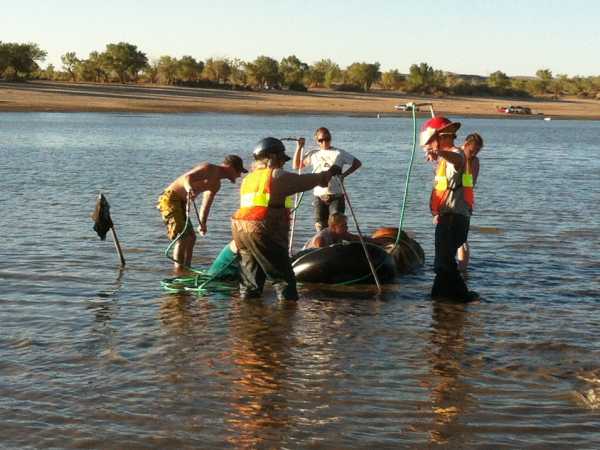
Reassessing the situation and resuming the jetting operation.
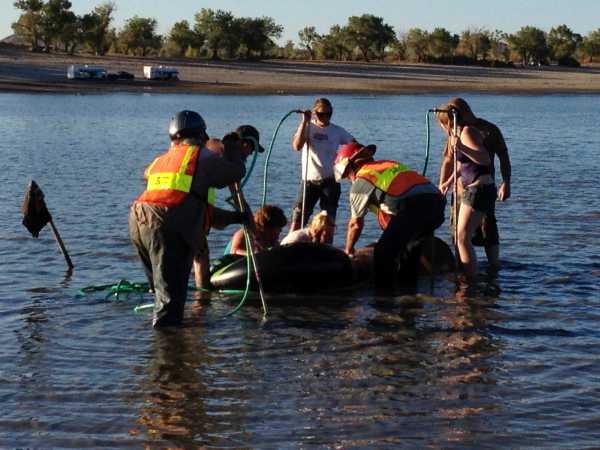
Rigging the rear sling to rotate the horse out of the bog.
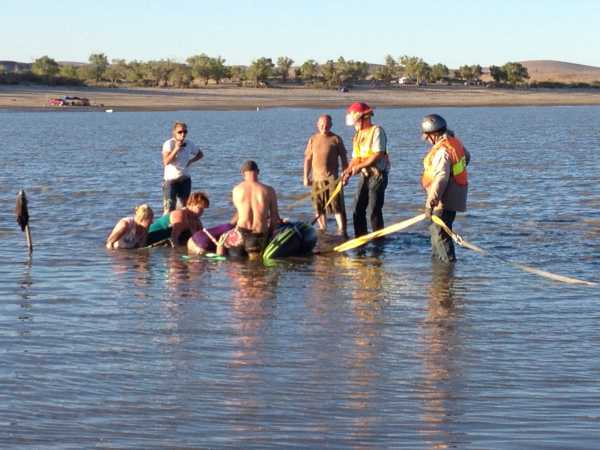
Rigging a forward assist.
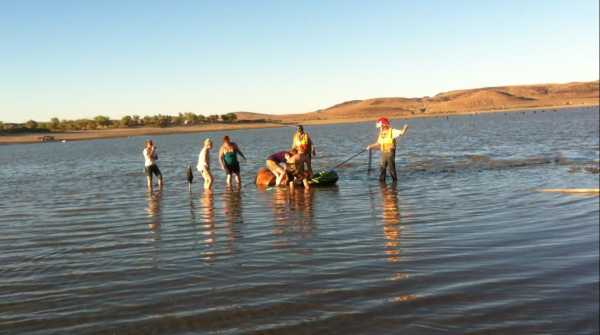
Sternal position, forward assist.
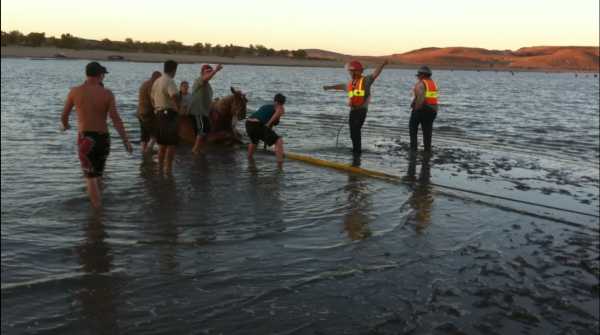
The horse attempting to rise as bystanders come close.
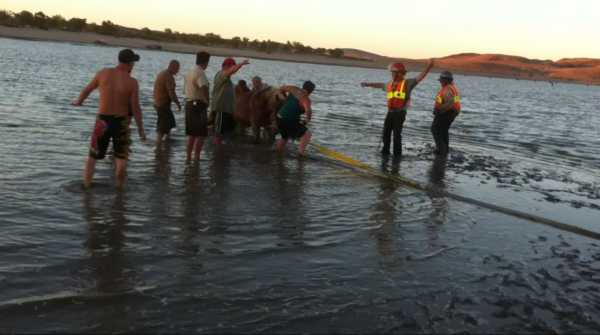
Everyone gets clear as the horse falls over.
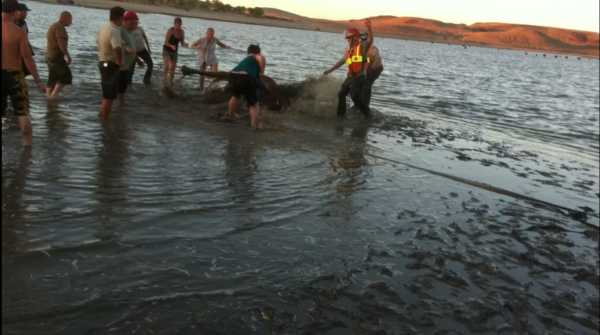
Maintaining head position to keep him from drowning until everyone regrouped and the scene is secured.
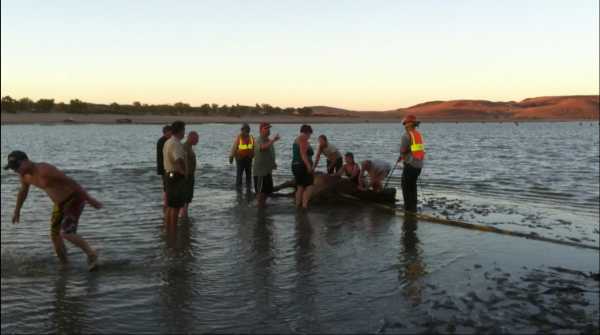
Protecting the horse's "down side" eye as he is brought on shore.
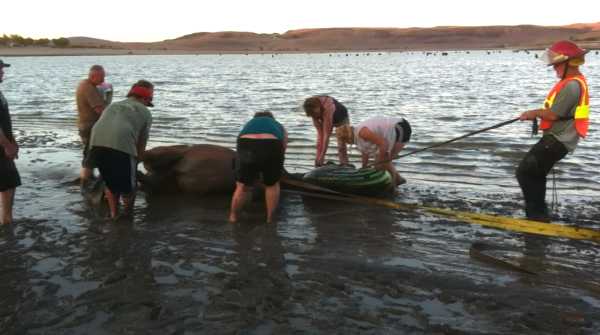
Back on his feet some 8 hours after entering the lake.
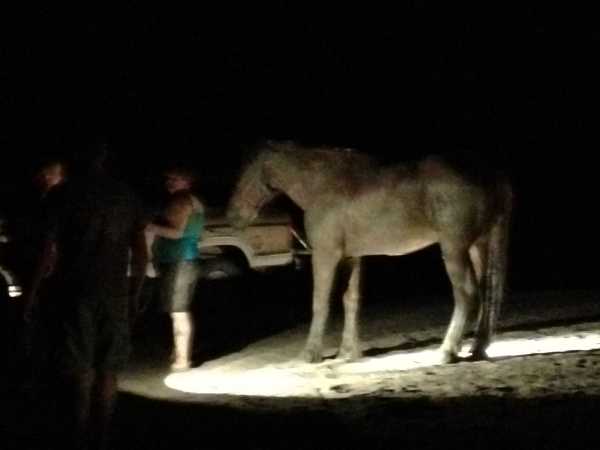
Go to Skull Session Index
Return to the Strike Team LRTC Page
This material is intended for the use of the Technical Large Animal Emergency Rescue (TLAER) Facebook Group. TLAER is a trademark of Technical Large Animal Emergency Rescue. |
